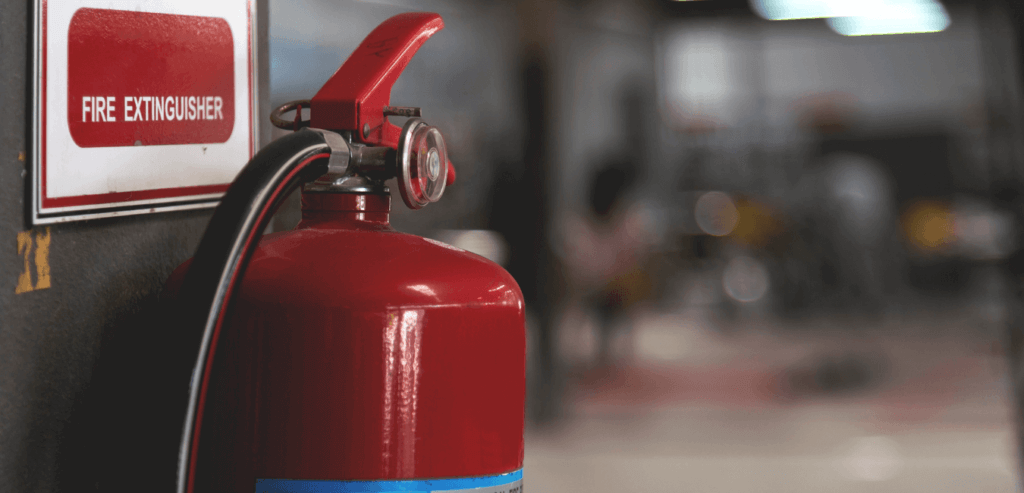As a business owner, knowing the common causes of fire damage can help you protect your space.
In 2018, according to the National Fire Protection Association (NFPA), nonresidential buildings accounted for 103,600 fires resulting in more than $2 billion in losses. Damage wasn’t done to just the structures; these fires caused 1,025 injuries and 85 unfortunate deaths. Over the past ten years, there has been a 26% increase in nonresidential fires and a 30% increase in fatalities.
These tragic occurrences are often entirely avoidable. With proper planning and maintenance, you can keep your business running smoothly, especially when it comes to preventable risks like a fire.
Top 5 Common Causes of Fire Damage in Businesses
Knowing common causes of fire damage for nonresidential fires can help you evaluate your business and ways you can reduce risk.
1. Cooking Equipment
For more than ten years, cooking has been the leading cause of nonresidential building fires. Although you may think cooking fires only occur in restaurants, they can happen anywhere there is a kitchen area.
The cause of cooking fires is a mix of human error and appliance malfunctions. Cooking equipment is responsible for:
- 65% of healthcare facilities fires
- 61% of restaurants fires
- 38% of educational institutions fires
- 29% of office property fires
- 13% of store and mercantile property fires
2. Careless Unintentional Fires
There are almost 12,000 human error fires annually in nonresidential buildings. These can be a result of anything from improperly discarded cigarettes, cigars, or unattended candles.
3. Arson
Roughly 10% of business fires are set each year purposely, leading to $162 million in losses. Due to the intentional nature of these fires, they usually cause a significant amount of damage.
4. Electrical and Lighting Systems
About 7% of fires start due to electrical system malfunction such as building wiring, electric outlets, or extension cords.
5. Heating Equipment
HVAC systems, space heaters, water heaters, and other appliances account for more than 7,000 fires per year.

How to Prevent Commercial Fires
Fire and smoke controls are vital components to fire safety and prevention. Detecting a fire and properly extinguishing it early can reduce its impact. Having an emergency plan in place and regular inspections by professionals can provide a review of your building and possible areas to improve safety.
- Fire extinguishers – Most nonresidential fires are small and contained. Having easily accessible fire extinguishers strategically placed throughout your business can aid in stopping small fires from spreading.
- Fire alarms – Often, businesses have fire alarms in place. However, they must maintain them and change batteries properly. You should dedicate specific times throughout the year to check and fix any improperly-working devices.
- Install a sprinkler system – Sprinkler systems save lives and are the most cost-effective way to reduce the spread of fire and save lives. According to the NFPA, a non-residential fire has not killed more than two people in a wholly sprinkled building.
In addition to general safety equipment and protocols, targeted plans aimed at the most common causes of fires can reduce the likelihood of a fire.
- Kitchen fires – One in four building fires is related to cooking equipment. Therefore, this is an important area to focus your fire prevention efforts. Make sure kitchen appliances are clean and functioning correctly. Sprinklers, alarms, and easily accessible fire extinguishers are a must in kitchens.
- Careless unintentional fires – Since unintentional fires often can’t be avoided, it’s essential to educate employees on fire prevention and safety practices. You should also consider designating smoking areas and banning open flames such as candles.
- Arson – An arsonist may start a fire anywhere, but bathrooms, trash cans, garages, and open areas like a lawn or field are common spots. While arson can’t be prevented entirely, a few precautions can limit the damage:
- Empty trash cans daily
- Keep dumpsters away from the building
- Keep landscaping maintained
- Install motion detection cameras or lights in dark or normally unused areas.
- Heating equipment – Have your building’s heating systems regularly inspected, especially during winter when they get more use. Keep flammable materials away from heat sources. Install smoke alarms where the HVAC system is housed and in any water heater or storage rooms.
- Building wiring – Fires are more common in older buildings that don’t have modern wiring. However, even newer buildings sometimes experience wiring fires. Check cords regularly for fraying, broken connectors, or cracked insulation. You should replace any damaged cables or wiring immediately. Have your wiring inspected every few years to ensure it is working correctly and update it when needed to meet new guidelines.
Teach Your Employees About Fire Safety
Protecting against a commercial fire begins with training your employees on how to prevent them.
Since most workplace fires start in the kitchen, start by educating them on kitchen fire safety tips. You can prevent many fires if employees keep an eye on their food, unplug the appliance after using it, and uphold other rules in your business setting.
You must educate your employees on common causes of fire damage and what to do if there’s a fire. Well-trained employees can help prevent injuries and reduce damage.
- Have fire protocols in place. It’s essential to train staff on location and proper use of fire extinguishers in the office. Sometimes, flames are small enough to put out without calling emergency services. If it’s a more extensive fire, your employees should know what to do: exit via the closest emergency exits and contact 911 immediately. Conducting a fire drill at least once a year can help reinforce protocols.
- Have a safety officer. A designated safety officer can lead your office’s fire prevention plans. Their duties should include composing emergency routes and assigning employee meeting points. This person can also oversee safety plans, equipment, and information updates.
- Have a first aid kit available. In case of injuries, familiarize your employees with the location of the first-aid kit.

What To Do If a Workplace Fire Does Occur
In case of a fire, it’s imperative to have an emergency plan in place. If an employee sees a fire that can be quickly contained, they should attempt to use the fire extinguisher right away. If the fire is too large to extinguish, the staff member should immediately engage your emergency alarm system. Once the alarm is ringing, everyone must exit through appropriate, pre-determined evacuation routes. When an employee makes it safely outside, they should call 911.
After your workforce is outdoors and standing in the designated waiting spots, do an official headcount. If anyone is missing, don’t rush back inside the burning building to find them. Instead, alert the emergency services that this person is missing and allow the fire department to search.
What To Do After The Fire Is Out
1. Document Everything
Not documenting everything can cost you money. Create a log of contacts to keep track of everyone you have spoken to and timelines. Keep all expense receipts during your recovery period.
2. Contact your Insurance Company
Immediately after the fire, reach out to your insurance company to report any loss. If you lease the space, you will also want to contact the building’s owner.
3. Gather Valuable and Secure Space
Once the fire department permits you to enter the building, retrieve any valuables. Collect important insurance policies, business licenses, employee documentation, and records. Secure the space with tarps or plywood to prevent any further damage and avoid being a target to thieves or vandals.
4. Turn Off Utilities
To prevent further damage, you will want to turn off the gas and electricity to the building. Do not turn the utilities back on until the space has been inspected and the needed repairs are complete.
5. Update your Employees, Vendors, and Customers
Notify the utility companies, post office, vendors, and your bank about your situation. Also, be sure to contact your employees and customers.
In the unfortunate event that a fire does break out in your business, call on the professionals at ServiceMaster Restore. Our commercial fire and smoke damage removal services will guide you through every step of the process to ensure you can get your doors back open as quickly as possible.
We’ll work to save as many critical business assets as we can, including important documents, computers, data storage devices, product stock, and more. With a commitment to be by your side every step of the way, we’ll work with you to ensure you can get back to business as usual.#moms
When your life gets turned upside down, call on ServiceMaster Restoration by RSI. We are prepared to handle calls 24 hours a day, seven days a week, 365 days a year. Call us now (405) 251-7286 to help you restore your peace of mind.

